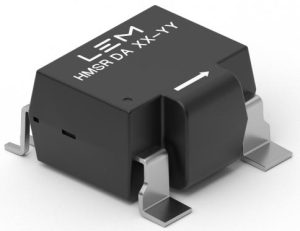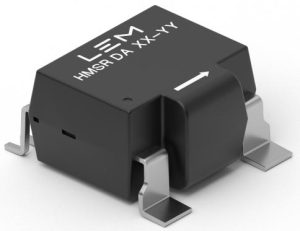To be unveiled officially at PCIM in Nuremberg next week, the sensor is aimed at applications prone to noise, distortion, and interference.
Called HMSR DA sensor and intended for both ac and dc sensing, it offers a resolution of 11 to 13bit and has a 10MHz clock – in the pipeline are 14 to 16bit devices clocking above 20MHz.
“Because the technology built into HMSR DA is the first of its kind, it will enable engineers to look at new ways of formulating their system design,” according to LEM. “The sigma-delta bitstream output is not only easy to use but is also flexible – customers can apply filters to adapt the sensor to their specific needs.”
Not much more information is available at the moment. Existing HMST parts look similar, run on 5V and have ±2V analog voltage outputs and 300kHz bandwidth. They come in versions rated at between 6A and 30A. Isolation between sensed and sensing circuits is designed for operation at up to 600V or up to 1.5kV depending on the insulation class nominated. The height is 6mm, and the footprint is just over 12 x 10mm.
Predicted applications for the new sigma-delta output types are in stand-alone servo drives, robotics, sewing machines, automated guided vehicles, and CNC machine tools.
LEM will be on stand 202 in Hall 9 at PCIM.



 Current sensors
Current sensors Voltage sensors
Voltage sensors Humidity sensors
Humidity sensors Pressure sensors
Pressure sensors Temperature sensors
Temperature sensors









